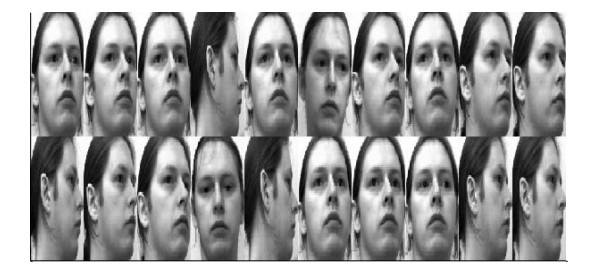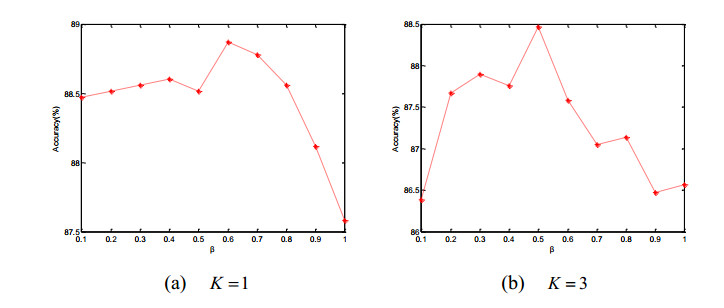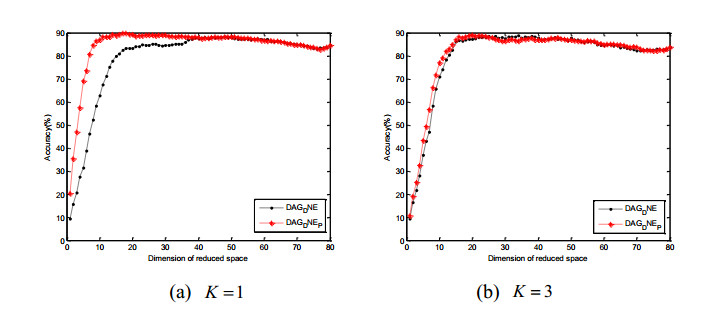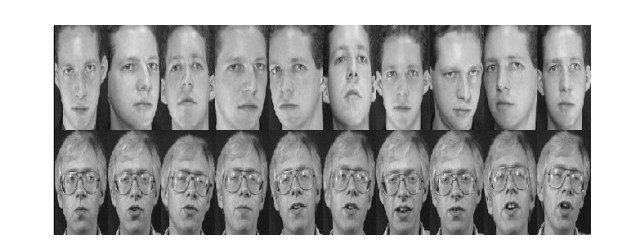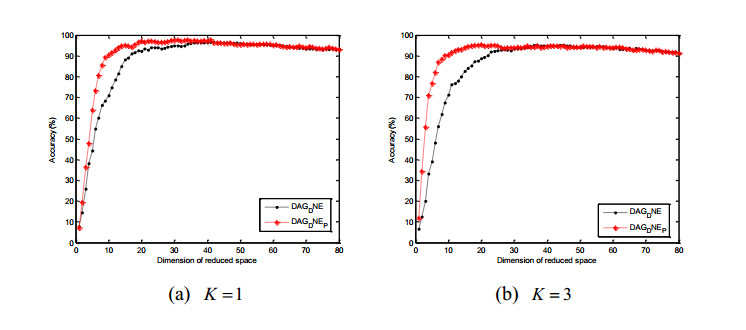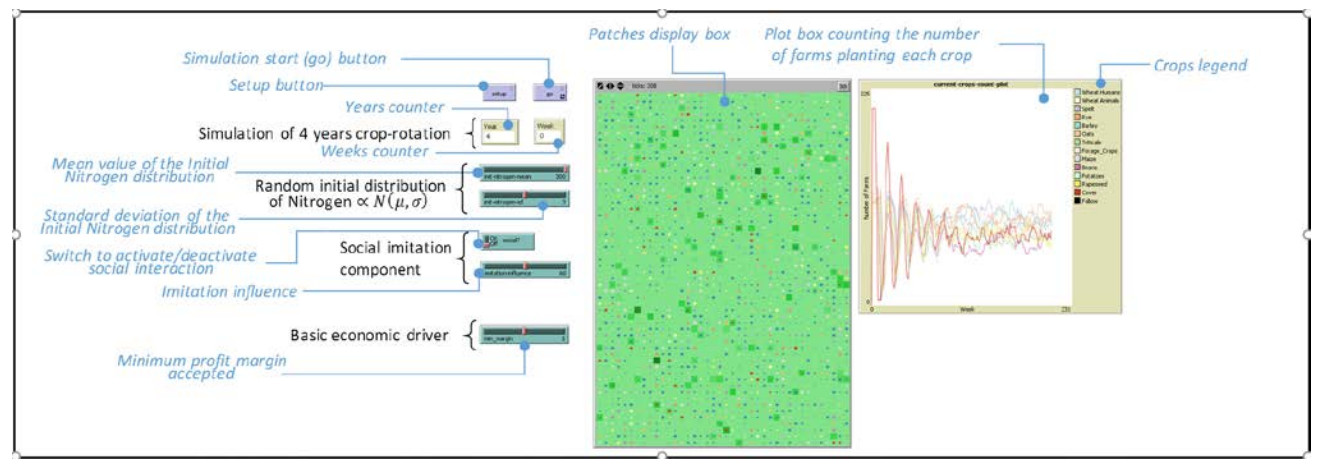|
[1]
|
UN-WCED (1987) Our Common Future. Oxford University Press.
|
|
[2]
|
Sala S, Ciuffo B, Nijkamp P (2015) A systemic framework for sustainability assessment. Ecol Econ 119: 314–325. doi: 10.1016/j.ecolecon.2015.09.015

|
|
[3]
|
Wiek A, Ness B, Schweizer-Ries P, et al. (2012) From complex systems analysis to transformational change: A comparative appraisal of sustainability science projects. Sustainability Sci 7: 5–24.
|
|
[4]
|
Marvuglia A, Benetto E, Murgante B (2015) Calling for an Integrated Computational Systems Modelling Framework for Life Cycle Sustainability Analysis. J Environ Accounting Manage 3: 213–216. doi: 10.5890/JEAM.2015.09.001

|
|
[5]
|
Heijungs R (2010) Ecodesign-carbon footprint-life cycle assessment-life cycle sustainability analysis. A flexible framework for a continuum of tools. Sci J Riga Tech U 4: 42–46.
|
|
[6]
|
Guinée JB, Heijungs R, Huppes G, et al. (2011) Life Cycle Assessment: Past, Present, and Future. Environ Sci Technol 45: 90–96. doi: 10.1021/es101316v

|
|
[7]
|
Ponta L, Raberto M, Teglio A, et al. (2018) An Agent-based Stock-flow Consistent Model of the Sustainable Transition in the Energy Sector. Ecol Econ 145: 274–300. doi: 10.1016/j.ecolecon.2017.08.022

|
|
[8]
|
Markard J, Raven R, Truffer B (2012) Sustainability transitions: An emerging field of research and its prospects. Res Polic 41: 955–967. doi: 10.1016/j.respol.2012.02.013

|
|
[9]
|
The TIR Consulting Group LCC (2016) The 3rd industrial revolution strategy study for the Grand Duchy of Luxembourg. Luxembourg.
|
|
[10]
|
Martin G, Allain S, Bergez JE, et al. (2018) How to Address the Sustainability Transition of Farming Systems? A Conceptual Framework to Organize Research. Sustainability 10: 2083.
|
|
[11]
|
Stanitsas M, Kirytopoulos K, Vareilles E (2019) Facilitating sustainability transition through serious games: A systematic literature review. J Clean Prod 208: 924–936. doi: 10.1016/j.jclepro.2018.10.157

|
|
[12]
|
Mitchell M (2009) Complexity: A Guided Tour. Oxford University Press, New York.
|
|
[13]
|
Popa F, Guillermin M, Dedeurwaerdere T (2015) A pragmatist approach to transdisciplinarity in sustainability research: From complex systems theory to reflexive science. Futures 65: 45–56. doi: 10.1016/j.futures.2014.02.002

|
|
[14]
|
Hare M, Deadman P (2004) Further towards a taxonomy of agent-based simulation models in environmental management. Math Comput Simulat 64: 25–40. doi: 10.1016/S0378-4754(03)00118-6

|
|
[15]
|
Rounsevell MDA, Robinson DT, Murray-Rust D (2011) From actors to agents in socio-ecological systems models. Philos T Roy Soc B 367: 259–269.
|
|
[16]
|
Heath B, Hill R, Ciarallo F (2009) A Survey of Agent-Based Modeling Practices (January 1998 to July 2008). J Artif Soc Soc Simul 12: 9.
|
|
[17]
|
Heckbert S, Baynes T, Reeson A (2010) Agent-based modeling in ecological economics. Ann N Y Acad Sci 1185: 39–53. doi: 10.1111/j.1749-6632.2009.05286.x

|
|
[18]
|
Teglio A (2011) From Agent-Based models to artificial economies: The Eurace approach for policy design in economics. PhD thesis, Universitat Jaume I.
|
|
[19]
|
Gaud N, Galland S, Gechter F, et al. (2008) Holonic multilevel simulation of complex systems: Application to real-time pedestrians simulation in virtual urban environment. Simul Model Pract Theor 16: 1659–1676. doi: 10.1016/j.simpat.2008.08.015

|
|
[20]
|
Gilbert N (2008) Agent-Based Models. SAGE Publications, Los Angeles.
|
|
[21]
|
Grimm V, Railsback SF (2005) Individual-based Modeling and Ecology. Princeton University Press.
|
|
[22]
|
North MJ, Macal CM (2007) Managing Business Complexity: Discovering Strategic Solutions With Agent-Based Modeling and Simulation. Oxford University Press, Oxford.
|
|
[23]
|
Ferber J (1999) Multi-agent systems: An introduction to distributed artificial intelligence, 1st edition. Addison-Wesley.
|
|
[24]
|
An L (2012) Modeling human decisions in coupled human and natural systems: Review of agent-based models. Ecol Model 229: 25–36. doi: 10.1016/j.ecolmodel.2011.07.010

|
|
[25]
|
An L, Zvoleff A, Liu J, et al. (2014) Modeling human decisions in coupled human and natural systems (CHANS): Lessons from a comparative analysis. Ann Assoc Am Geogr 104: 723–745. doi: 10.1080/00045608.2014.910085

|
|
[26]
|
Halog A, Manik Y (2011) Advancing Integrated Systems Modelling Framework for Life Cycle Sustainability Assessment. Sustainability 3: 469–499. doi: 10.3390/su3020469

|
|
[27]
|
Marvuglia A, Benetto E, Rege S, et al. (2013) Modelling approaches for consequential life-cycle assessment (C-LCA) of bioenergy: Critical review and proposed framework for biogas production. Renew Sust Energ Rev 25: 768–781. doi: 10.1016/j.rser.2013.04.031

|
|
[28]
|
Tiruta-Barna L, Pigné Y, Navarrete Gutiérrez T, et al. (2016) Framework and computational tool for the consideration of time dependency in Life Cycle Inventory: Proof of concept. J Clean Prod 116: 198–206. doi: 10.1016/j.jclepro.2015.12.049

|
|
[29]
|
Davis C, Nikolić I, Dijkema GPJ (2009) Integration of Life Cycle Assessment Into Agent-Based Modeling. J Ind Ecol 13: 306–325. doi: 10.1111/j.1530-9290.2009.00122.x

|
|
[30]
|
Baustert P, Benetto E (2017) Uncertainty analysis in agent-based modelling and consequential life cycle assessment coupled models: A critical review. J Clean Prod 156: 378–394. doi: 10.1016/j.jclepro.2017.03.193

|
|
[31]
|
Querini F, Benetto E (2014) Agent-based modelling for assessing hybrid and electric cars deployment policies in Luxembourg and Lorraine. Transport Res Part A-Pol 70: 149–161. doi: 10.1016/j.tra.2014.10.017

|
|
[32]
|
Querini F, Benetto E (2015) Combining Agent-Based Modeling and Life Cycle Assessment for the Evaluation of Mobility Policies. Environ Sci Technol 49: 1744–1751. doi: 10.1021/es5060868

|
|
[33]
|
Page C, Bazile D, Becu N, et al. (2013) Agent-Based Modelling and Simulation Applied to Environmental Management, In: Edmonds B, Meyer R (eds.), Simulating Social Complexity, Springer Berlin Heidelberg, 499–540.
|
|
[34]
|
Clift R, Doig A, Finnveden G (2000) The Application of Life Cycle Assessment to Integrated Solid Waste Management: Part I-Methodology. Trans Inst Chem Eng 78: 279–289.
|
|
[35]
|
Shimako AH, Tiruta-Barna L, Pigné Y, et al. (2016) Environmental assessment of bioenergy production from microalgae based systems. J Clean Prod 139: 51–60. doi: 10.1016/j.jclepro.2016.08.003

|
|
[36]
|
Heijungs R, Suh S (2002) The Computational Structure of Life Cycle Assessment. Kluwer Academic Publishers, Dordrecht, The Netherlands.
|
|
[37]
|
Miller SA, Moysey S, Sharp B, et al. (2013) A Stochastic Approach to Model Dynamic Systems in Life Cycle Assessment. J Ind Ecol 17: 352–362. doi: 10.1111/j.1530-9290.2012.00531.x

|
|
[38]
|
Bichraoui-Draper N, Xu M, Miller SA, et al. (2015) Agent-based life cycle assessment for switchgrass-based bioenergy systems. Resour, Conserv Recycl 103: 171–178. doi: 10.1016/j.resconrec.2015.08.003

|
|
[39]
|
Heairet A, Choudhary S, Miller S, et al. (2012) Beyond life cycle analysis: Using an agent-based approach to model the emerging bio-energy industry, In: Proceedings of 2012 IEEE International Symposium on Sustainable Systems and Technology (ISSST), Boston, MA, 1–5.
|
|
[40]
|
Navarrete Gutiérrez T, Rege S, Marvuglia A, et al. (2015) Introducing LCA Results to ABM for Assessing the Influence of Sustainable Behaviours, In: Bajo J, Hernández JZ, Mathieu P, Campbell A, Fernández-Caballero A, Moreno MN, Julián V, Alonso-Betanzos A, Jiménez-López MD, Botti V (eds.), Trends in Practical Applications of Agents, Multi-Agent Systems and Sustainability, Springer International Publishing, 185–196.
|
|
[41]
|
Marvuglia A, Rege S, Navarrete Gutiérrez T, et al. (2017) A return on experience from the application of agent-based simulations coupled with life cycle assessment to model agricultural processes. J Clean Prod 142: 1539–1551. doi: 10.1016/j.jclepro.2016.11.150

|
|
[42]
|
Davidsson P, Verhagen H (2013) Types of Simulation, In: Edmonds B, Meyer R (eds.), Simulating Social Complexity, Springer Berlin Heidelberg, 23–36.
|
|
[43]
|
Smajgl A, Brown DG, Valbuena D, et al. (2011) Empirical characterisation of agent behaviours in socio-ecological systems. Environ Modell Softw 26: 837–844. doi: 10.1016/j.envsoft.2011.02.011

|
|
[44]
|
Huynh N, Namazi-Rad M, Perez P, et al. (2013) Generating a Synthetic Population in Support of Agent-Based Modeling of Transportation in Sydney.
|
|
[45]
|
Bichraoui-Draper N (2015) Computational Sustainability Assessment: Agent-based Models and Agricultural Industrial Ecology. Université de Technologie de Troyes.
|
|
[46]
|
Bruch E, Atwell J (2015) Agent-Based Models in Empirical Social Research. Sociol Meth Res 44: 186–221. doi: 10.1177/0049124113506405

|
|
[47]
|
Bandini S, Manzoni S, Vizzari G (2009) Agent Based Modeling and Simulation: An Informatics Perspective. J Artif Soc Soc Simul 12: 4.
|
|
[48]
|
Norling EJ (2009) Modelling Human Behavior with BDI Agents. PhD thesis, University of Melbourne.
|
|
[49]
|
Goldman A (1993) The psychology of folk psychology. Behav Brain Sci 16: 15–28. doi: 10.1017/S0140525X00028648

|
|
[50]
|
Caillou P, Gaudou B, Grignard A, et al. (2017) A Simple-to-use BDI architecture for Agent-based Modeling and Simulation. Adv Intell Syst Comput 528: 15–28. doi: 10.1007/978-3-319-47253-9_2

|
|
[51]
|
Quang Truong C (2016) Integrating cognitive models of human decision-making in agent-based models: an application to land use planning under climate change in the Mekong river delta. PhD Thesis, Université Pierre et Marie Curie-Paris VI.
|
|
[52]
|
Rand W, Rust RT (2011) Agent-based modeling in marketing: Guidelines for rigor. Int J Res Mark 28: 181–193. doi: 10.1016/j.ijresmar.2011.04.002

|
|
[53]
|
Watts DJ, Strogatz SH (1998) Collective dynamics of "small-world" networks. Nature 393: 440–442. doi: 10.1038/30918

|
|
[54]
|
Marvuglia A, Rege S, Vázquez-Rowe I, et al. (2013) Applying agent-based modelling for consequential Life Cycle Assessment of agro-systems: Challenges, strategies and assets. 6th International Conference on Life Cycle Management, Gothenburg, Sweden, 25–28 August 2013.
|
|
[55]
|
Moglia M, Cook S, McGregor J (2017) A review of Agent-Based Modelling of Technology Diffusion with special reference to residential energy efficiency. Sust Cities Soc 31: 173–182. doi: 10.1016/j.scs.2017.03.006

|
|
[56]
|
Borshchev A (2013) The Big Book of Simulation Modeling: Multimethod Modeling with Anylogic 6. AnyLogic North America.
|
|
[57]
|
Grignard A, Drogoul A, Zucker JD (2013) Online analysis and visualization of agent based models. Ho Chi Minh City, Vietnam, 662–672.
|
|
[58]
|
Happe K, Kellermann K, Balmann A (2006) Agent-based Analysis of Agricultural Policies: An Illustration of the Agricultural Policy Simulator AgriPoliS, its Adaptation and Behavior. Ecol Soc 11: 49 doi: 10.5751/ES-01741-110149

|
|
[59]
|
Zellner ML, Theis TL, Karunanithi AT, et al. (2008) A new framework for urban sustainability assessments: Linking complexity, information and policy. Comput, Environ Urban Syst 32: 474–488. doi: 10.1016/j.compenvurbsys.2008.08.003

|
|
[60]
|
Astier M, García-Barrios L, Galván-Miyoshi Y, et al. (2012) Assessing the Sustainability of Small Farmer Natural Resource Management Systems. A Critical Analysis of the MESMIS Program (1995–2010). Ecol Soc 17: 20.
|
|
[61]
|
Murray-Rust D, Robinson DT, Guillem E, et al. (2014) An open framework for agent based modelling of agricultural land use change. Environ Modell Softw 61: 19–38. doi: 10.1016/j.envsoft.2014.06.027

|
|
[62]
|
Wise S, Crooks AT (2012) Agent-based modeling for community resource management: Acequia-based agriculture. Comput, Environ Urban Syst 36: 562–572. doi: 10.1016/j.compenvurbsys.2012.08.004

|
|
[63]
|
Kravari K, Bassiliades N (2015) A Survey of Agent Platforms. J Artif Soc Soc Simul 18: 11
|
|
[64]
|
Kornhauser D, Wilensky U, Rand W (2009) Design Guidelines for Agent Based Model Visualization. J Artif Soc Soc Simul 12: 21.
|
|
[65]
|
Edmonds B, Moss S, (2005) From KISS to KIDS-An "Anti-simplistic" Modelling Approach, In: Multi-Agent and Multi-Agent-Based Simulation, 130–144.
|
|
[66]
|
Waldherr A, Wijermans N (2013) Communicating social simulation models to sceptical minds. J Artif Soc Soc Simul 16: 13.
|
|
[67]
|
Bert FE, Rovere SL, Macal CM, et al. (2014) Lessons from a comprehensive validation of an agent based-model: The experience of the Pampas Model of Argentinean agricultural systems. Ecol Model 273: 284–298. doi: 10.1016/j.ecolmodel.2013.11.024

|
|
[68]
|
Sargent RG (2013) Verification and validation of simulation models. J Simul 7: 12–24. doi: 10.1057/jos.2012.20

|
|
[69]
|
Zeigler BP, Praehofer H, Kim TG (2000) Theory of Modeling and Simulation: Integrating Discrete Event and Continuous Complex Dynamic Systems. Academic Press.
|
|
[70]
|
Bianchi C, Cirillo P, Gallegati M, et al. (2007) Validating and Calibrating Agent-Based Models: A Case Study. Comput Econ 30: 245–264. doi: 10.1007/s10614-007-9097-z

|
|
[71]
|
David N, (2013) Validating Simulations, In: Edmonds B, Meyer R (eds.), Simulating Social Complexity, Springer Berlin Heidelberg, 135–171.
|
|
[72]
|
Windrum P, Fagiolo G, Moneta A (2007) Empirical Validation of Agent-Based Models: Alternatives and Prospects. J Artif Soc Soc Simul 10: 8.
|
|
[73]
|
Knepell PL, Arangno DC (1993) Simulation Validation: A Confidence Assessment Methodology. Wiley-IEEE Computer Society Press.
|
|
[74]
|
McKelvey B, (2002) Model-Centered Organization Science Epistemology, In: Baum JAC (ed.), Companion to Organizations, Wiley-Blackwell, 752–780.
|
|
[75]
|
Voinov A, Bousquet F (2010) Modelling with stakeholders. Environ Modell Softw 25: 1268–1281. doi: 10.1016/j.envsoft.2010.03.007

|
|
[76]
|
Louie MA, Carley KM (2008) Balancing the criticisms: Validating multi-agent models of social systems. Simul Model Pract Theory 16: 242–256. doi: 10.1016/j.simpat.2007.11.011

|
|
[77]
|
Bianchi C, Cirillo P, Gallegati M, et al. (2008) Validation in agent-based models: An investigation on the CATS model. J Econ Behav Org 67: 947–964. doi: 10.1016/j.jebo.2007.08.008

|
|
[78]
|
Fagiolo G, Birchenhall C, Windrum P (2007) Empirical Validation in Agent-based Models: Introduction to the Special Issue. Comput Econ 30: 189–194. doi: 10.1007/s10614-007-9109-z

|
|
[79]
|
Fagiolo G, Moneta A, Windrum P (2007) A Critical Guide to Empirical Validation of Agent-Based Models in Economics: Methodologies, Procedures, and Open Problems. Comput Econ 30: 195–226. doi: 10.1007/s10614-007-9104-4

|
|
[80]
|
Damgaard M, Kjeldsen C, Sahrbacher A, et al. (2009) Validation of an Agent-Based, Spatio-Temporal Model for Farming in the River Gudenå Landscape. Results from the MEA-Scope Case Study in Denmark, In: Piorr A, Müller K (eds.), Rural Landscapes and Agricultural Policies in Europe, Springer Berlin Heidelberg, 239–254.
|
|
[81]
|
Park HS, Rene ER, Choi SM, et al. (2008) Strategies for sustainable development of industrial park in Ulsan, South Korea-from spontaneous evolution to systematic expansion of industrial symbiosis. J Environ Manage 87: 1–13. doi: 10.1016/j.jenvman.2006.12.045

|
|
[82]
|
Busch J, Roelich K, Bale CSE, et al. (2017) Scaling up local energy infrastructure; An agent-based model of the emergence of district heating networks. Energ Policy 100: 170–180. doi: 10.1016/j.enpol.2016.10.011

|
|
[83]
|
Rotmans J (2006) Tools for Integrated Sustainability Assessment: A two-track approach. Int Assess J 6: 35–57.
|
|
[84]
|
Axtell RL (2000) Why agents? on the varied motivations for agent computing in the social sciences. Center on Social and Economic Dynamics.
|
|
[85]
|
Davis C (2007) Integration of Life Cycle Analysis within Agent Based Modeling using a case study on bio-electricity. MSc thesis, TU Delft.
|
|
[86]
|
Segovia-Juarez JL, Ganguli S, Kirschner D (2004) Identifying control mechanisms of granuloma formation during M. tuberculosis infection using an agent-based model. J Theor Biol 231: 357–376.
|
|
[87]
|
Topping CJ, Dalkvist T, Grimm V (2012) Post-Hoc Pattern-Oriented Testing and Tuning of an Existing Large Model: Lessons from the Field Vole. PLoS One 7: e45872. doi: 10.1371/journal.pone.0045872

|
|
[88]
|
Grimm V, Revilla E, Berger U, et al. (2005) Pattern-Oriented Modeling of Agent-Based Complex Systems: Lessons from Ecology. Science 310: 987–991. doi: 10.1126/science.1116681

|
|
[89]
|
Grimm V, Railsback SF (2011) Pattern-oriented modelling: A "multi-scope" for predictive systems ecology. Philos T Roy Soc B 367: 298–310.
|
|
[90]
|
Topping CJ, Høye TT, Olesen CR (2010) Opening the black box-Development, testing and documentation of a mechanistically rich agent-based model. Ecol Model 221: 245–255. doi: 10.1016/j.ecolmodel.2009.09.014

|
|
[91]
|
Delmotte S, Barbier JM, Mouret JC, et al. (2016) Participatory integrated assessment of scenarios for organic farming at different scales in Camargue, France. Agric Syst 143: 147–158. doi: 10.1016/j.agsy.2015.12.009

|
|
[92]
|
Andrei N, (2013) Introduction to GAMS Technology, In: Andrei N (ed.), Nonlinear Optimization Applications Using the GAMS Technology, Springer US, Boston, MA, 9–23.
|
|
[93]
|
Moss S, Edmonds B (2005) Sociology and Simulation: Statistical and Qualitative Cross-Validation. Am J Soc 110: 1095–1131. doi: 10.1086/427320

|
|
[94]
|
Laurent G (2000) Improving the external validity of marketing models: A plea for more qualitative input. Int J Res Mark 17: 177–182. doi: 10.1016/S0167-8116(00)00020-3

|
|
[95]
|
Smajgl A, Xu J, Egan S, et al. (2015) Assessing the effectiveness of payments for ecosystem services for diversifying rubber in Yunnan, China. Environ Modell Softw 69: 187–195. doi: 10.1016/j.envsoft.2015.03.014

|
|
[96]
|
Smajgl A, Ward JR, Foran T, et al. (2015) Visions, beliefs, and transformation: Exploring cross-sector and transboundary dynamics in the wider Mekong region. Ecol Soc 20: 16.
|
|
[97]
|
Smajgl A, Ward J, Egan S (2013) Validating simulations of development outcomes in the Mekong region.
|
|
[98]
|
Box G (1979) Robustness in the strategy of scientific model building. Robustness in Statistics.
|
|
[99]
|
Schouten M, Verwaart T, Heijman W (2014) Comparing two sensitivity analysis approaches for two scenarios with a spatially explicit rural agent-based model. Environ Modell Softw 54: 196–210. doi: 10.1016/j.envsoft.2014.01.003

|
|
[100]
|
Filatova T, Verburg PH, Parker DC, et al. (2013) Spatial agent-based models for socio-ecological systems: Challenges and prospects. Environ Modell Softw 45: 1–7. doi: 10.1016/j.envsoft.2013.03.017

|
|
[101]
|
Saltelli A, Ratto M, Andres T, et al. (2008) Global Sensitivity Analysis: The Primer. Wiley & Sons.
|
|
[102]
|
Cariboni J, Gatelli D, Liska R, et al. (2007) The role of sensitivity analysis in ecological modelling. Ecol Model 203: 167–182. doi: 10.1016/j.ecolmodel.2005.10.045

|
|
[103]
|
Marino S, Hogue IB, Ray CJ, et al. (2008) A methodology for performing global uncertainty and sensitivity analysis in systems biology. J Theor Biol 254: 178–196. doi: 10.1016/j.jtbi.2008.04.011

|
|
[104]
|
Lorscheid I, Heine BO, Meyer M (2012) Opening the "black box" of simulations: increased transparency and effective communication through the systematic design of experiments. Comput Math Organ Theor 18: 22–62. doi: 10.1007/s10588-011-9097-3

|
|
[105]
|
Dancik GM, Jones DE, Dorman KS (2010) Parameter estimation and sensitivity analysis in an agent-based model of Leishmania major infection. J Theor Biol 262: 398–412. doi: 10.1016/j.jtbi.2009.10.007

|
|
[106]
|
Ratto M, Castelletti A, Pagano A (2012) Emulation techniques for the reduction and sensitivity analysis of complex environmental models. Environ Modell Softw 34: 1–4. doi: 10.1016/j.envsoft.2011.11.003

|
|
[107]
|
Happe K (2005) Agent-based modelling and sensitivity analysis by experimental design and metamodelling: An application to modelling regional structural change.
|
|
[108]
|
Fonoberova M, Fonoberov VA, Mezić I (2013) Global sensitivity/uncertainty analysis for agent-based models. Reliab Eng Syst Safe 118: 8–17. doi: 10.1016/j.ress.2013.04.004

|
|
[109]
|
Ligmann-Zielinska A, Kramer DB, Cheruvelil KS, et al. (2014) Using Uncertainty and Sensitivity Analyses in Socioecological Agent-Based Models to Improve Their Analytical Performance and Policy Relevance. PLoS One 9: e109779. doi: 10.1371/journal.pone.0109779

|
|
[110]
|
Ligmann-Zielinska A, Sun L (2010) Applying time-dependent variance-based global sensitivity analysis to represent the dynamics of an agent-based model of land use change. Int J Geogr Inf Sci 24: 1829–1850. doi: 10.1080/13658816.2010.490533

|
|
[111]
|
Alam M, Deng X, Philipson C, et al. (2015) Sensitivity Analysis of an ENteric Immunity SImulator (ENISI)-Based Model of Immune Responses to Helicobacter pylori Infection. PLoS One 10: e0136139. doi: 10.1371/journal.pone.0136139

|
|
[112]
|
Troost C, Berger T (2015) Dealing with Uncertainty in Agent-Based Simulation: Farm-Level Modeling of Adaptation to Climate Change in Southwest Germany. Am J Agr Econ 97: 833–854. doi: 10.1093/ajae/aau076

|
|
[113]
|
Bell A, Parkhurst G, Droppelmann K, et al. (2016) Scaling up pro-environmental agricultural practice using agglomeration payments: Proof of concept from an agent-based model. Ecol Econ 126: 32–41. doi: 10.1016/j.ecolecon.2016.03.002

|
|
[114]
|
Parry HR, Topping CJ, Kennedy MC, et al. (2013) A Bayesian sensitivity analysis applied to an Agent-based model of bird population response to landscape change. Environ Modell Softw 45: 104–115. doi: 10.1016/j.envsoft.2012.08.006

|
|
[115]
|
Yang J (2011) Convergence and uncertainty analyses in Monte-Carlo based sensitivity analysis. Environ Modell Softw 26: 444–457. doi: 10.1016/j.envsoft.2010.10.007

|
|
[116]
|
Ligmann-Zielinska A, Jankowski P (2010) Exploring normative scenarios of land use development decisions with an agent-based simulation laboratory. Comput, Environ Urban Syst 34: 409–423. doi: 10.1016/j.compenvurbsys.2010.05.005

|
|
[117]
|
Igos E, Benetto E, Meyer R, et al. (2018) How to treat uncertainties in life cycle assessment studies? Int J Life Cycle Assess, 1–14.
|
|
[118]
|
Lloyd SM, Ries R (2007) Characterizing, Propagating, and Analyzing Uncertainty in Life-Cycle Assessment: A Survey of Quantitative Approaches. J Ind Ecol 11: 161–179.
|
|
[119]
|
Huijbregts MAJ, Gilijamse W, Ragas AMJ, et al. (2003) Evaluating Uncertainty in Environmental Life-Cycle Assessment. A Case Study Comparing Two Insulation Options for a Dutch One-Family Dwelling. Environ Sci Technol 37: 2600–2608.
|
|
[120]
|
Wei W, Larrey-Lassalle P, Faure T, et al. (2015) How to Conduct a Proper Sensitivity Analysis in Life Cycle Assessment: Taking into Account Correlations within LCI Data and Interactions within the LCA Calculation Model. Environ Sci Technol 49: 377–385. doi: 10.1021/es502128k

|
|
[121]
|
Parker DC, Hessl A, Davis SC (2008) Complexity, land-use modeling, and the human dimension: Fundamental challenges for mapping unknown outcome spaces. Geoforum 39: 789–804. doi: 10.1016/j.geoforum.2007.05.005

|
|
[122]
|
Filatova T, Parker DC, van der Veen A (2009) Agent-Based Urban Land Markets: Agent's Pricing Behavior, Land Prices and Urban Land Use Change. J Artif Soc Soc Simul 12: 13.
|
|
[123]
|
Schreinemachers P, Berger T (2011) An agent-based simulation model of human-environment interactions in agricultural systems. Environ Modell Softw 26: 845–859. doi: 10.1016/j.envsoft.2011.02.004

|
|
[124]
|
Feola G, Binder CR (2010) Towards an improved understanding of farmers' behavior: The integrative agent-centred (IAC) framework. Ecol Econ 69: 2323–2333. doi: 10.1016/j.ecolecon.2010.07.023

|
|
[125]
|
Jackson T (2005) Motivating sustainable consumption. A review of evidence on consumer behavior and behavioural change. A Report to the Sustainable Development Research Network. Centre for Environmental Strategy, University of Surrey, Guilford.
|
|
[126]
|
Bonabeau E (2002) Agent-based modeling: Methods and techniques for simulating human systems. P Natl Acad Sci USA 99: 7280–7287. doi: 10.1073/pnas.082080899

|
|
[127]
|
Matthews R, Gilbert N, Roach A, et al. (2007) Agent-based land-use models: A review of applications. Landscape Ecol 22: 1447–1459. doi: 10.1007/s10980-007-9135-1

|
|
[128]
|
Parker DC, Manson SM, Janssen MA, et al. (2003) Multi-Agent Systems for the Simulation of Land-Use and Land-Cover Change: A review. Ann Assoc Am Geogr 93: 314–337. doi: 10.1111/1467-8306.9302004

|
|
[129]
|
Berger T, Schreinemachers P, Woelcke J (2006) Multi-agent simulation for the targeting of development policies in less-favored areas. Agr Syst 88: 28–43. doi: 10.1016/j.agsy.2005.06.002

|
|
[130]
|
Freeman T, Nolan J, Schoney R (2009) An Agent-Based Simulation Model of Structural Change in Canadian Prairie Agriculture, 1960–2000. Can J Agr Econ 57: 537–554. doi: 10.1111/j.1744-7976.2009.01169.x

|
|
[131]
|
Happe K, Balmann A, Kellermann K, et al. (2008) Does structure matter? The impact of switching the agricultural policy regime on farm structures. J Econ Behav Org 67: 431–444.
|
|
[132]
|
Mialhe F, Becu N, Gunnell Y (2012) An agent-based model for analyzing land use dynamics in response to farmer behavior and environmental change in the Pampanga delta (Philippines). Agric, Ecosyst Environ 161: 55–69. doi: 10.1016/j.agee.2012.07.016

|
|
[133]
|
Kaye-Blake W, Li FY, McLeish MA, et al. (2010) Multi-agent simulation models in agriculture: A review of their construction and uses. 60.
|
|
[134]
|
Marohn C, Schreinemachers P, Quang DV, et al. (2013) A software coupling approach to assess low-cost soil conservation strategies for highland agriculture in Vietnam. Environ Modell Softw 45: 116–128. doi: 10.1016/j.envsoft.2012.03.020

|
|
[135]
|
Murray-Rust D, Brown C, van Vliet J, et al. (2014) Combining agent functional types, capitals and services to model land use dynamics. Environ Modell Softw 59: 187–201. doi: 10.1016/j.envsoft.2014.05.019

|
|
[136]
|
Hauschild MZ, Huijbregts MAJ (2015) LCA compendium-the complete world of life cycle assessment: Life cycle impact assessment. Springer, Dordrecht.
|
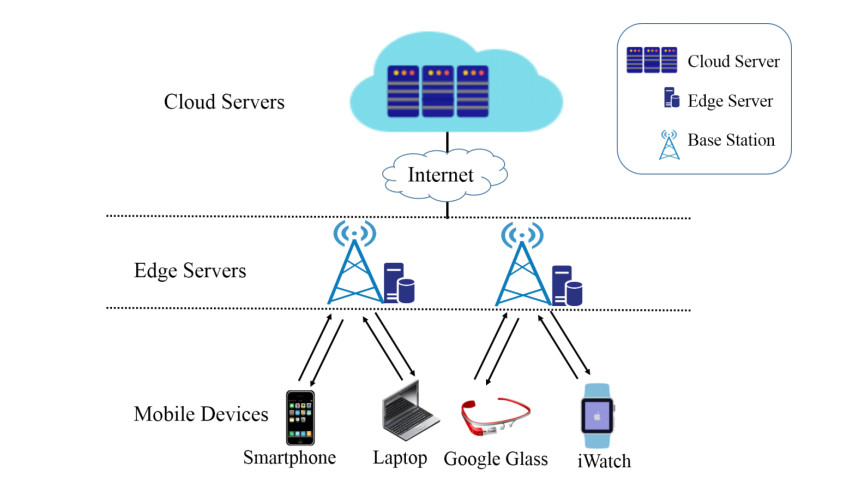









 DownLoad:
DownLoad:
